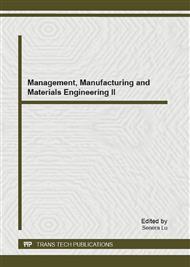p.222
p.227
p.232
p.237
p.242
p.247
p.253
p.258
p.265
Parameter Modeling Method for Aeroengine Virtual Testing System
Abstract:
Aeroengine parameters model is pivotal for development of aeroengine virtual testing system. So the modeling method is discussed in this paper in detail. Firstly, dependency relationships between parameters are established according to the variational character of each parameter in different working state, including transient processes such as false start, cold run, start, acceleration, deceleration, stop and stable processes such as idle, warming, performance test. Then parameter equations are formulated based on least square fit, utilizing actual test data of some kind of turbo-fan aeroengine as prototype. With the method, modeling work for aeroengine virtual testing system is facilitated. And each parameter varying pattern is consistent to that of real aeroengine. Furthermore, different test process can be simulated via changing relevant setting parameters. It makes the development of aeroengine virtual testing system much easier.
Info:
Periodical:
Pages:
242-246
Citation:
Online since:
December 2012
Keywords:
Price:
Сopyright:
© 2013 Trans Tech Publications Ltd. All Rights Reserved
Share:
Citation:


